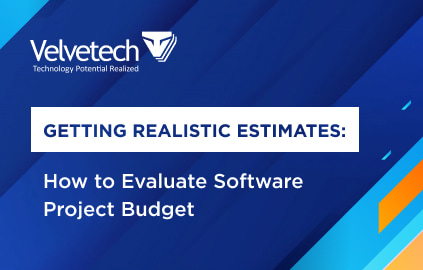The goal of most software development companies and their clients is software production at the lowest cost, with the best quality, in the shortest time. Proper planning and management of the development process with the right methodology is important to achieve such a goal.
There are lots of software development methodologies that propose different ways to achieve the desired result at a fair cost and short delivery time. These methodologies set up the framework that structures planning, controlling, and developing information systems.
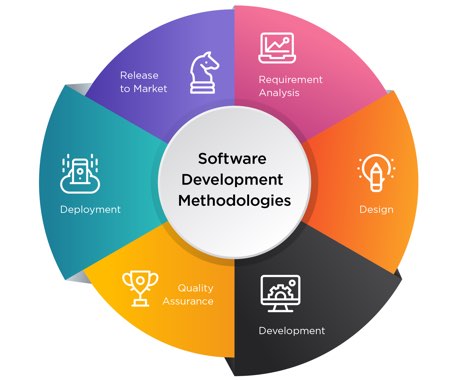
This article is a spotlight on the popular software development methodologies, their advantages and disadvantages. Below is a comprehensive list of the software development models employed today in most software development companies.
- Agile Software Development
- Scrum Development
- FDD: Feature-Driven Development
- Lean Development
- XP: Extreme Programming
- Waterfall Model
- Prototype Model
- RAD: Rapid Application Development
- Dynamic Systems Development Model
- Spiral Model
- JAD: Joint Application Development
- Rational Unified Process
- DevOps Methodology
- Adaptive Software Development
- Behavior-Driven Development
Reading Time: ~20 min
What Is a Good Software Development Methodology?
While the term might be self-explanatory, it’s still a good idea for us to get on the same page about the meaning of software engineering methodologies and what might constitute a good one for your particular undertaking.
In short, an IT development method is a series of steps needed to produce a certain piece of a digital product. Typically, it includes research, planning, design, and development phases that all constitute the life cycle of the software you’re working on. However, depending on the chosen approach, the way of carrying out these stages might differ.
So, what makes the most suitable methodology? Unsurprisingly, it all depends on your unique business and industry needs, capabilities, and end goals. If you base your choice of the development process on these three elements, you’ll be more likely to pick the one that will deliver the best results.
Project Estimates
Watch our webinar to learn about the practical ways to evaluate your software project estimates.
Software Development Methodologies: a Comparison of Pros & Cons
What drives the choice of a software development methodology? This choice is always relative to the requirements of a project. In addition to this, project type and size, the skills of team members, financial resources and preferences are also valuable considerations.
Let’s take a look at our top list of methodologies and see why software development companies opt for these models.
Agile Methodology
Agile development is one of the most popular software engineering techniques in the IT world today. Besides that, numerous software production methodologies are based on Agile principles. However, they slightly differ. Keep pace, some of them we will describe in this article.
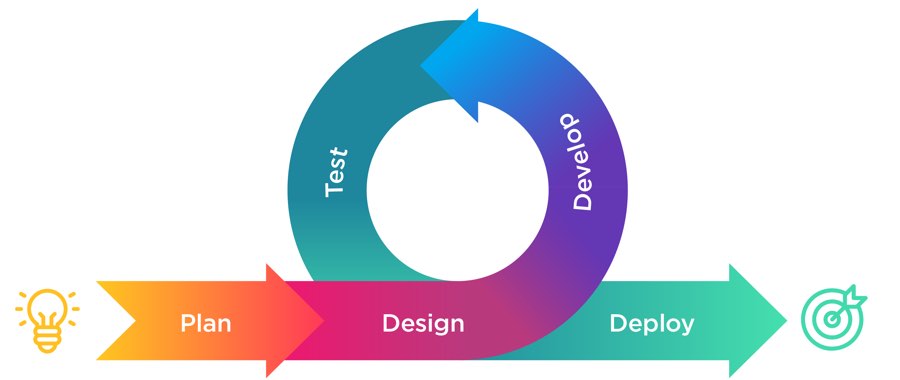
By itself, the Agile software development is mainly focused on a finished product with collaborative efforts. It involves short-term software development cycles called iterations. Each iteration is well organized and similar to a mini software project usually lasting from one to four weeks.
The iterations contain tasks such as adding new functionalities, analyzing and planning, designing, coding, testing, and documenting. As the number of iterations increases, the development team reassesses the project and prioritizes the backlog.
Using the Agile model is a good practice that ensures regular product releases and continuous improvement with each iteration. However, it’s important to note that Agile is not a panacea for software development projects, as it comes with its own set of advantages and disadvantages that need to be carefully considered.
Benefits of Agile
- The Agile methodology delivers a high-quality output because small iterations involve easy testing and maintenance with fewer errors.
- It allows for creative improvements and modifications while working on a software product. Developers get to explore various modifications to the code.
- The Agile methodology is known for its adaptability and minimal reliance on initial documentation. Applied changes don’t disrupt or have setbacks on the project.
- Software costing and budgets are well planned. The Agile approach requires project estimation before each iteration.
- Due to the focus on clarity, there are regular interactions and communication among the client, developers, and members of the production process leading to a good working relationship.
Considerations in Agile
- Lack of initial clarity and project vision due to inconsistency in product specifications.
- The challenge of estimating the resources required for a project. Unpredictable changes make it hard to estimate the costs and resources.
- Lacks efficiency in documentation.
- No set or strict deadlines. Changes in specifications and requirements will mean no accurate estimate deadlines for project completion.
Discover some Common Challenges Causing Project Delays
Agile Methodology Steps
- Development iteration
- QA iteration
- Retrospective
- Scope adjustment
Learn more: How to Ruin Your Mobile App with Agile in 8 Easy Steps
Scrum Methodology
Scrum is the most famous framework that is based on Agile methodology. It is empirical in nature and can be applied to any fast-changing or priority-emerging requirements.
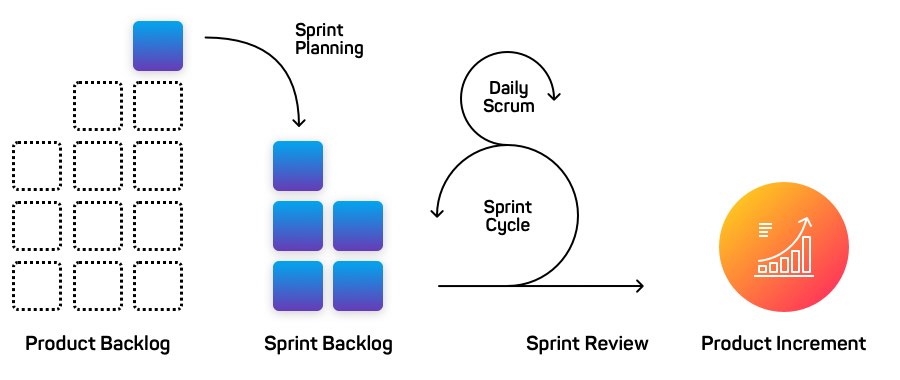
In Scrum, iterations are named sprints. As a software development process, it kicks off with brief planning for each sprint, followed by daily scrum meetings that highlight the progress and ends with a final review.
Scrum methodology is ideal for managing projects with not well-defined requirements and feedback from the client. Teamwork, transparency, and regular status updates speed up the development.
Benefits of Scrum
- The team makes the principal project decisions.
- The daily meetings promote the measure of individual productivity leading to the improvement in efforts of every team member.
- Scrum methodology discovers problems fast, resulting in short meetings and easy focus by the team.
- Prioritizing customer-driven features with Scrum is flexible. Business necessities documentation is not compulsory for successful development.
- Clients are in the production cycle as there is always something to assess after every sprint.
- The feedback cycle is fast, helping the project to stay focused.
Considerations in Scrum
- It is not an effective method for junior or middle-skill team members.
- The estimation of time and cost demands high accuracy for a project to be successful.
- This methodology is less effective for large project types.
Scrum Methodology Steps
- Sprint planning
- Sprint execution
- Sprint review meetings
- Retrospective
- Release
Feature-Driven Development Methodology
This is another iterative methodology but in combination with object modeling. It is effective for large team projects.
The first step is reviewing the scope of the system. After the review, next is the creation of domain models in detail for every feature, and then the scope of the system is reviewed all over again.
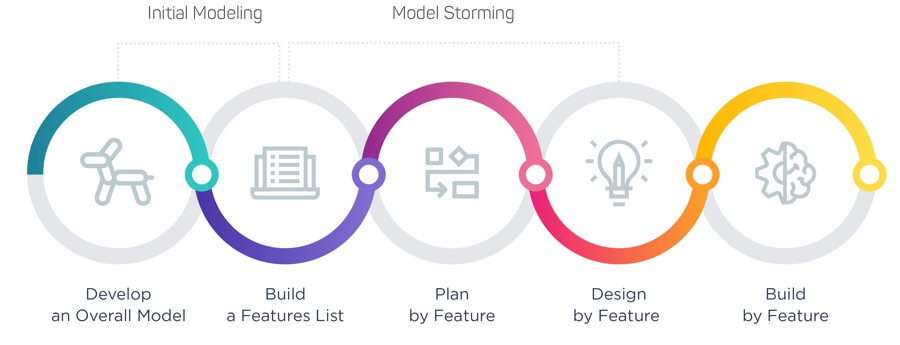
Merging of all the domain models leads to an overall single model. The development process with FDD involves five steps which are: developing the complete model, making the list of features, planning, designing, and building by feature.
Benefits of FDD
- This methodology is suitable for big projects with a guarantee of success.
- Its five-step process of development helps in accelerating software delivery with ease.
- FDD supports multiple teams working in parallel.
- The standards of this method rank with the best industry practices.
- Feature-driven development covers all projects that need sequential updates.
- The resulting features are always greater than the inputs.
Considerations in FDD
- It provides almost no documentation for project owners.
- Based on the efforts required, it’s not suitable for small projects.
- It’s too much a complex pattern of development for individual software developers.
- The success of this methodology solely depends on the Team Lead and his or her skills.
FDD Methodology Steps
- Development of an overall project model
- List of features
- Feature-focused iterations with milestones
- Design by feature
- Build by feature
Lean Methodology
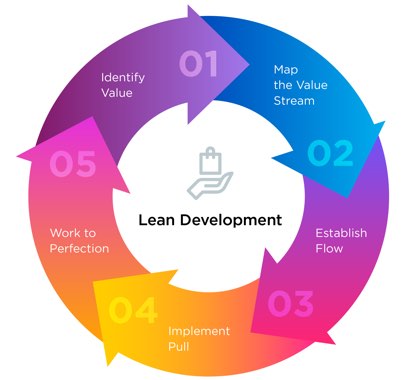
The Lean methodology emphasizes creating cost-effective and adaptable software. Derived from lean manufacturing principles, it optimizes resources by operating with only one-third of the typical funds, human efforts, and production time.
The workflow follows a minimalist approach, eliminating any unnecessary elements like excessive meetings and documentation. The primary goal is to develop software that can easily accommodate changes while being efficient and resourceful.
Benefits of Lean
- It is efficient for budget control.
- It allows the team to speed up the development. Most projects are completed in short time frames beating deadlines.
- The Lean methodology in its working process empowers the development team, motivating them to build acute decision-making abilities.
Considerations in Lean
- To benefit from time and budget, all decisions must be accurate and final.
- To keep the project focused on the plan, flexibility is restricted to avoid unnecessary deviation and time loss.
- Teamwork, discipline, and advanced skills are basic must-haves for the success of this approach.
- For a Lean project, the Business Analyst must possess the right set of skills and experience to ensure accurate and effective requirements documentation.
Find out What Makes a Seasoned Business Analyst
Lean Methodology Steps
- Identify value
- Map the value stream
- Create flow
- Establish pull
- Continuous improvement
Extreme Programming Methodology
Extreme Programming or XP also refers to Agile methodology. The main aim of this model is to create a fully-functional product and cut the cost of software non-essentialities.
It is a perfect fit for complex projects with fixed deadlines and not clearly determined requirements. Continuous planning and testing are one of the core principles here.
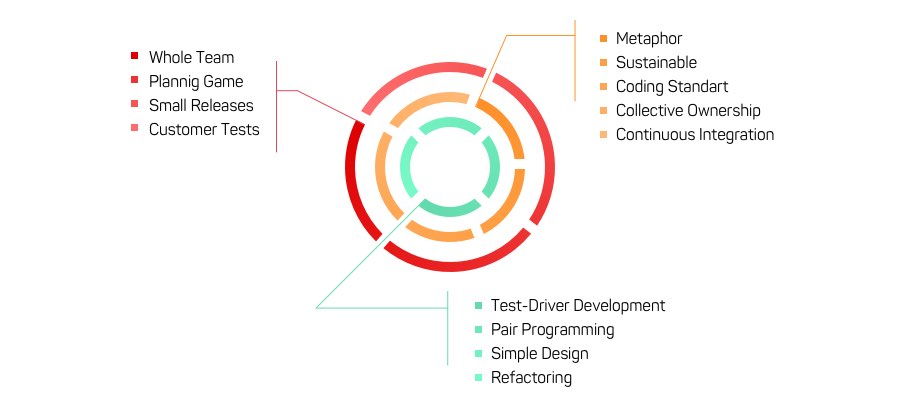
Extreme programming is most suitable for creating software in an unstable environment. This is one of the methodologies in software engineering that gives provision for developers to deliver a final product at a lower cost. At the same time, it is time-consuming with a lot of human effort due to the frequent meetings, test-driven approach, and pair programming.
Benefits of Extreme Programming
- It is cost-effective.
- Customer involvement and interaction are parts of the production process.
- There is a focus on practical planning and task scheduling. This makes developers stay committed to a project.
- Works well for small and large teams.
- Effective risk management increases the chances of success.
Considerations in Extreme Programming
- A practical quote for this method is almost impossible because of undetermined and changing project requirements.
- It requires frequent meetings and reviews between all stakeholders leading to expenses and time consumption.
- It involves too many changes in code which are tedious for some developers.
- Changing initial requirements at a later stage with this model has a high cost.
Extreme Programming Steps
- Project requirements
- Iteration planning
- Stories
- Test cases
- Development tasks
- Acceptance tests
Waterfall Methodology
With its introduction in 1970 by Dr. Winston W. Royce, the waterfall is the most traditional methodology in the IT industry. It is a classic approach and a very popular version of the system development life cycle in software engineering. The goals are pre-defined for each development phase.

It is linear in nature with all projects progressing in stages. The completion of one stage precedes the other. This methodology is rigid because once a stage is complete, no reversible changes can be made based on new requirements.
Benefits of Waterfall Methodology
- Straightforward with no complexity in use. It requires little or no experience.
- Testing is simple because it’s based on the use cases defined in the technical specification.
- Time-saving. In this methodology, the stages are processed and completed one at a time.
- It is effective for small projects in cases where the requirements are well-defined.
- There is easy management due to the rigid nature of the model with each stage having a separate review process.
- There is a fixed deadline for each of the development stages.
Considerations in Waterfall Methodology
- Maintenance type of projects does not apply to this method.
- The software under production only becomes functional at the last stage of the cycle.
- It is best used with only well-defined requirements available up-front.
- There can be no edits or changes once a project advances to the testing stage.
- It’s an ideal method for small and medium-sized projects but not long-term or research and development projects.
- Not applicable for projects that tend to have modifications along the way.
Waterfall Methodology Steps
- Requirements
- System design
- Development
- QA
- Deployment & maintenance
Prototyping Methodology
The strength of the prototyping methodology is that it caters to all the lapses of the software engineering process. According to this model, developers initially make a prototype of the software solution. They visualize how it will run and prove its function to investors or clients.

The developers subsequently make all the needed modifications in readiness for developing the final application. Naturally, this gives room for understanding the requirements of software development and conducting useful business analysis.
Benefits of Prototyping Methodology
- This method allows for the identification of risks and the correction of errors at the initial stages of development.
- Developers and testers working on a prototype can easily scale it with the anticipation of the client, see if they are on point, and make changes if needed.
- It is the best way to present and demonstrate the software product to a client or an investor.
- Requirements gathering and analysis is easy in a case where the document is absent.
- It benefits developers with the chance of getting valuable feedback from testers at an early stage of the development cycle saving unnecessary costs after launch.
- The relationship between the client and developer bonds better as a result of constant communication resulting from this method.
Considerations in Prototyping Methodology
- The initial result is never a market-ready product.
- Constant changes may lead to several designs and alterations in the code. This slows down the workflow.
- In some cases, it is the software vendor that covers the cost of a prototype.
Learn the Top Aspects of Choosing a Software Vendor
Prototyping Methodology Steps
- Determine objectives
- Develop / Refine / Demonstrate
- Test
- Implement
Rapid Application Development (RAD Model)
Rapid application development, as the name implies, delivers speedy results with high quality. This method is complemented by the participation of active users in the development process.
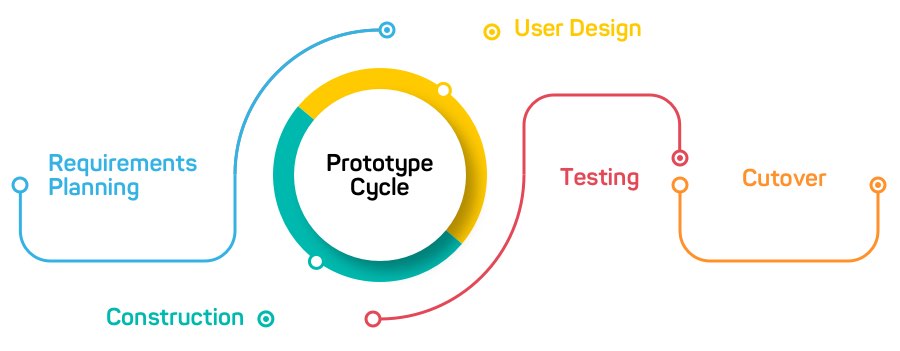
Software product development is made faster and of great quality by using focus groups to gather requirements, prototyping, user testing, reusing software components, continuous reviews, and informal communications.
Benefits of RAD Model
- Tasks for functions are done separately and then integrated into the project. This minimizes the errors encountered during the development.
- Regular testing in this method also eliminates the chances of drastic errors.
- Customer feedback is beneficial, it assists in maintaining and improving the quality of software solutions.
- The client has constant access to review the software development process.
Considerations in RAD Model
- The RAD is not practical for projects with low budgets.
- It is beneficial to only software projects with systems designs that can fit into modules.
- It needs a strong professional team to identify, interpret, and create the client’s requirements.
Read up on How to Explain Your Idea to the Development Team
RAD Model Steps
- Business modeling
- Data modeling
- Process modeling
- Application generation
- Testing & modeling
Dynamic Systems Development Model
In comparison with the RAD model, the dynamic systems development model possesses similar features. The main principle of this model is that perfect software is achievable through a constantly changing process.
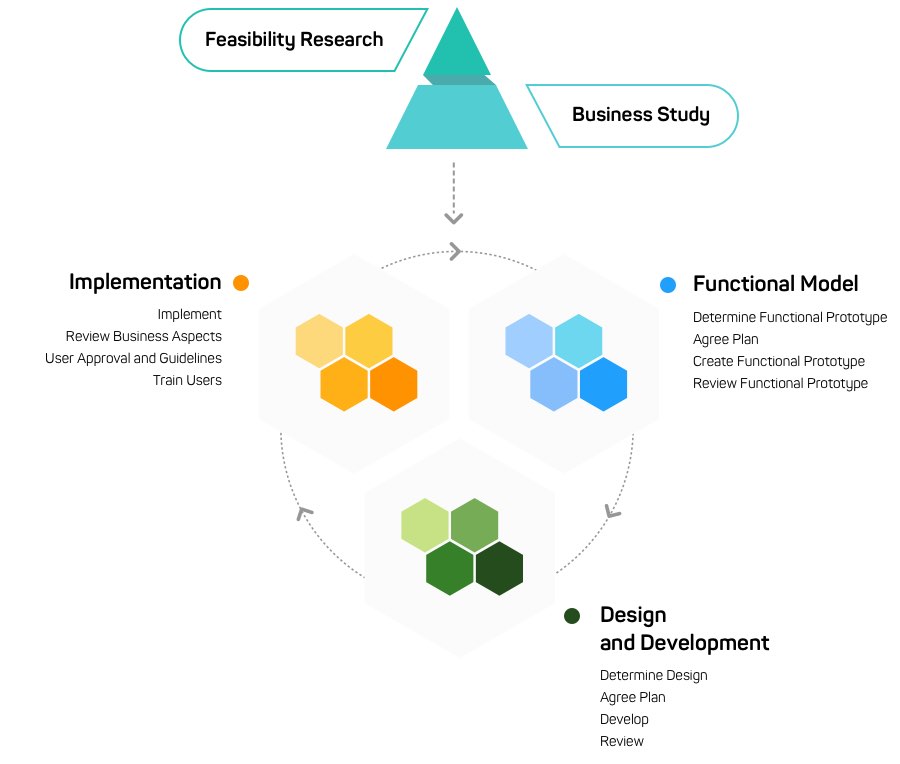
Iterative in nature, it is goal-oriented with other major characteristics like flexibility, lightness, and continuous development. With a focus on user involvement, it aims at the development and provision of software models based on a specified budget and deadline.
Benefits of Dynamic Systems Development
- Easy to use with access to end-users by developers.
- Basic functionality is developed faster with the aid of dynamic systems development methodology.
- This methodology involves end-users a lot, establishing a super understanding of the system functions.
- Projects using this method are always in the range of budget limits and timeframe.
Considerations in Dynamic Systems Development
- Not so popular as a model because of its complexity.
- It is only effective for companies with a small budget or one-time projects.
DSD Model Steps
- Feasibility and business study
- Functional model iteration
- Design and build iteration
- Implementation
Spiral Methodology
The Spiral lifecycle model seems highly sophisticated. It functions by the early identification and reduction of risks in a project. Beginning on a small scale, it encompasses risk exploration and the provision of plans to eliminate such risks.
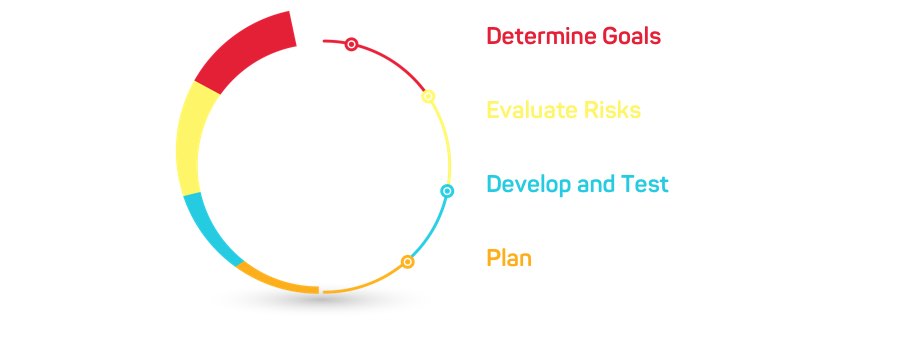
It then indicates if the next level of spiral iteration can begin. In contrast to the waterfall model, the spiral method enables the developer to make changes in the code or design even in the testing stage. It is suitable for most kinds of projects but requires good management.
Benefits of Spiral Methodology
- It involves extensive risk analysis leading to very minimal risks.
- This method is effective for developing high-risk and large projects in general.
- Features and functions can still be added even at the late stages of testing. The Spiral model revolves all the phases repeatedly, thereby enabling changes.
Considerations in Spiral Methodology
- It is a waste of resources for projects with low-risk factors.
- The success of the approach is dependent on risk analysis. If the risk analysis is faulty, then the results can be flawed.
- There is a risk factor of the development being inconclusive, resulting in a spiral manner without a conclusion.
Spiral Methodology Steps
- Analysis
- Evaluation
- Development
- Planning
Joint Application Development Methodology
The Joint application development methodology is most suitable for business software solutions. However, it can be effective for all kinds of development projects.

The development and design stages of software production involve interactive workshops. In these workshop sessions, the software system is defined by the developers and end-user or client.
With special attention to user stories and use cases, it’s a popular methodology for automating a growing business. Due to user participation in all the stages of production, it’s a favorite method for high client satisfaction.
Benefits of Joint Application Development
- High-quality software can be created fast with a low tendency of error.
- It has the perfect avenue for solving challenges with different points of view.
- The sessions provide adequate information for project research and analysis in a short period.
- JAD sessions create insights through the exchange of valuable information between the users and developers, making it an effortlessly proficient method.
Considerations in Joint Application Development
- Expected results of the client are often too high.
- The commitment of the end-user is somewhat proportional to the success of the method.
- Success is tied to a high skill level and work experience.
- This method is time-consuming for any project development team. It mandates planning and lots of meeting fixtures.
JAD Methodology Steps
- Define objectives
- Session preparation
- Session conduct
- Documentation
Rational Unified Process (RUP) Methodology
Based on object-oriented and web-enabled program development, the rational unified process methodology is considered a modern approach. It functions by splitting the workflow into four different parts. These parts are namely analysis and design, business modeling, deployment, and implementation.
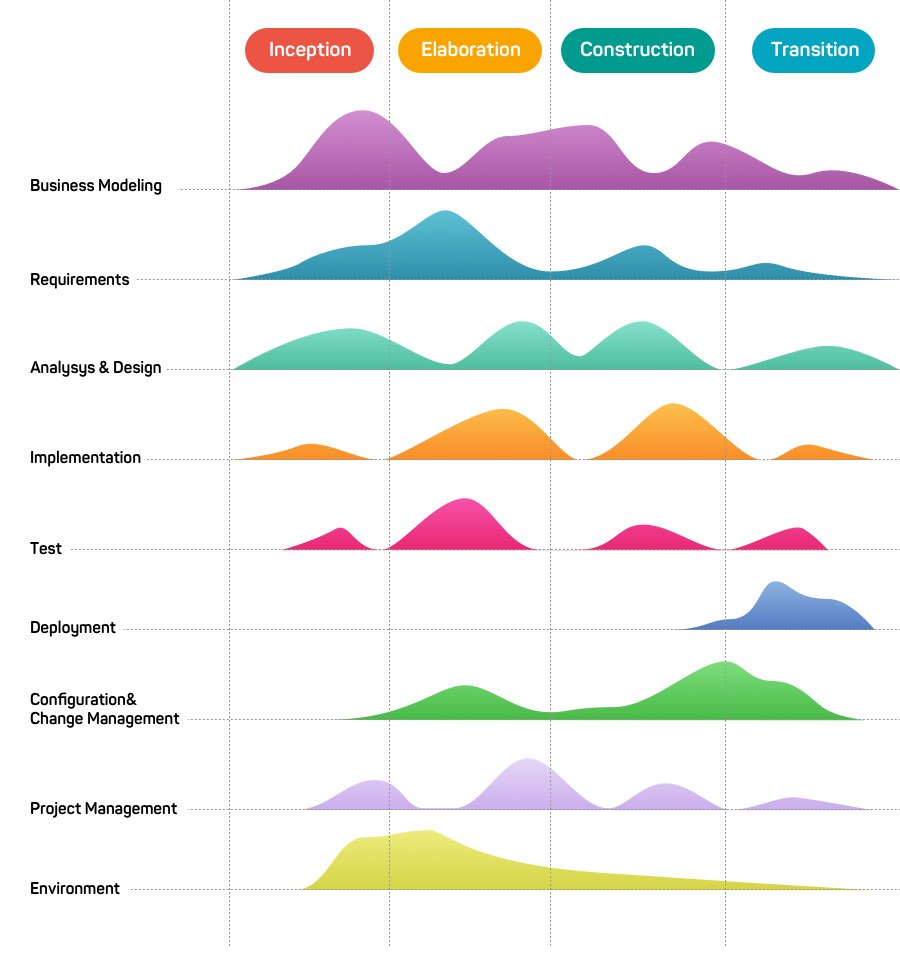
Developers are facilitated with specific tools such as templates, guidelines, and sequential processes with examples for all the stages in software development. This approach constantly monitors the quality of software created and controls applied changes.
Benefits of Rational Unified Process
- The recycling of used components speeds up the development time.
- There is no separate timeframe for integration as it’s a continuous process throughout the development.
- It’s effective in managing risks related to changes in requirements, also known as change request management.
- There is an emphasis on documentation.
Considerations in Rational Unified Process
- The use of recycling components is not always possible for projects that require the latest technologies.
- Unsuitable for new users as it requires expert skills.
- The stages in this methodology sometimes can be complex and difficult to organize.
- Projects with multiple development streams could be confusing due to continuous integration, especially during the test phases.
RUP Methodology Steps
- Inception
- Elaboration
- Construction
- Transition
DevOps Methodology
DevOps helps software development and IT operations function together. Usually, these two teams work in their own silos, but this methodology allows them to collaborate and foster the project implementation from the design phase to the product release.
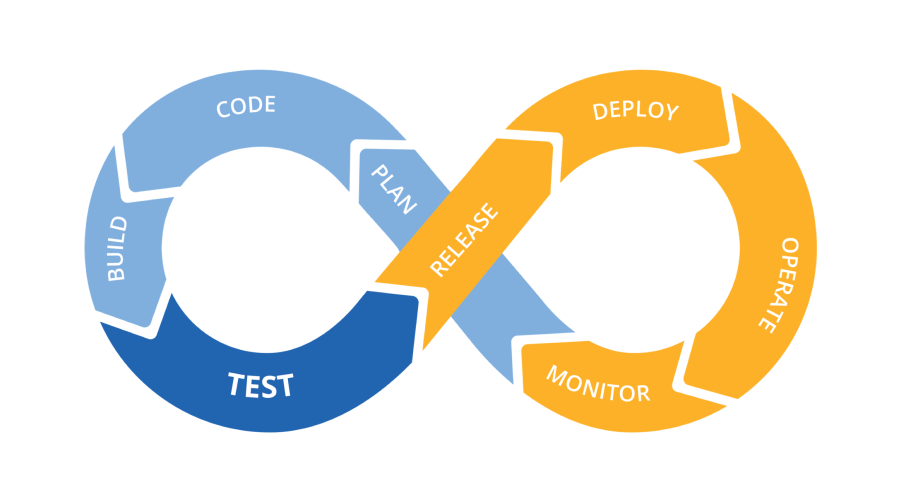
Enabling efficient communication between the teams, DevOps provides ground for building, testing, and releasing software in a shorter time. It ensures enhanced results and allows for delivering products on a continual basis.
Benefits of DevOps
- Simultaneous work of both teams on the project activities accelerates software delivery.
- While continuous delivery is a part of DevOps services, it allows a company to innovate and make product improvements whenever it’s needed.
Considerations in DevOps
- Production environment in the cloud may result in compatibility issues and more complex infrastructure.
- The method requires a proper mindset across the teams.
DevOps Methodology Steps
- Continuous development
- Continuous integration
- Continuous testing
- Continuous deployment
- Continuous monitoring
Adaptive Software Development (ASD)
Adaptive Software Development takes roots in the best practices of Rapid Application Development and Evolutionary Life Cycles. This model helps to meet initial goals by adapting to dynamic business requirements.
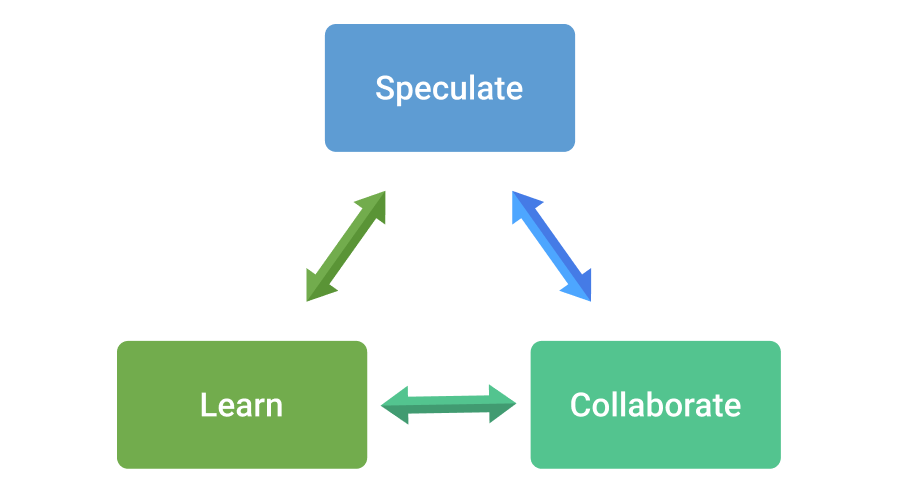
ASD is a non-linear approach. It assumes that each life cycle can be iterated and modified while another one is being executed. For example, it fits best for products where adding new features incrementally is important and where the client’s feedback constantly impacts the process.
Benefits of ASD
- Short feedback loops provide more opportunities to address quickly changing requirements.
- The tools and techniques of the ASD method ensure the development of high-quality and low-maintenance products.
- Since this approach considers quality assurance to be the essential part of the development phase, the risks of vulnerabilities and bugs are minimal.
Considerations in ASD
- It involves continuous collaboration with clients or users throughout the whole development process.
- Frequent changes that take place during development might be the reason for less detailed documentation.
ASD Methodology Steps
- Speculate
- Collaborate
- Learn
Behavior-Driven Development (BDD)
Behavior-Driven Development is a variation of an Agile methodology that formalizes a shared vision between all participants of how an app should behave. It aims to enable non-technical people to take an active role in the implementation of technical functionality.
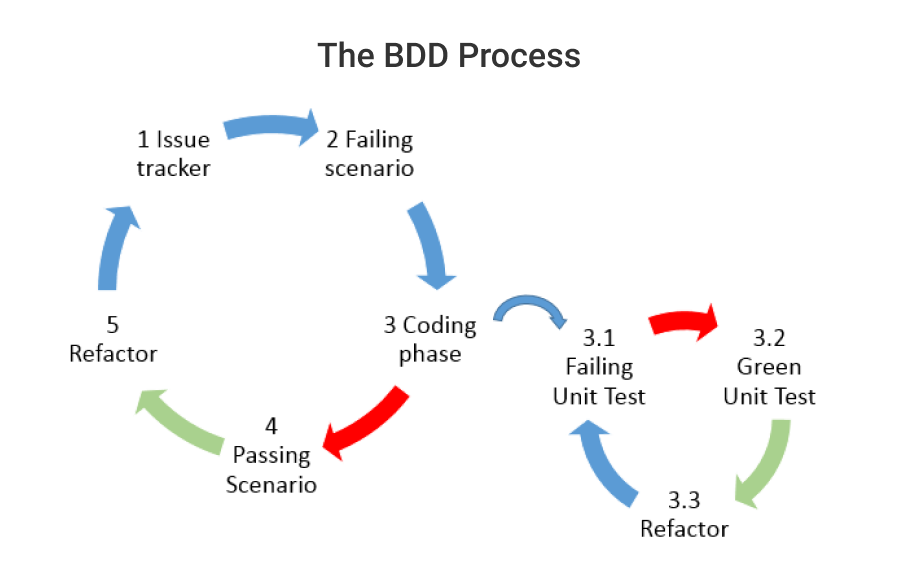
The approach is based on evolved Test-Driven Development (TDD). Essentially, it drives the execution of only those system behaviors that are crucial for business outcomes. On top of that, it calls for ongoing conversation and the use of concrete examples to minimize resource waste.
Benefits of BDD
- The method provides enhanced opportunities for collaboration between developers, QA specialists, and domain experts to deliver desired outcomes.
- BDD automates the generation of technical and end-user documentation based on specifications.
Considerations in BDD
- The approach implies a good understanding of TDD methodology, thus it suits better for experienced developers.
- Creating scenarios requires a lot of effort and time. Consequently, it’s not a good option for short-term projects.
BDD Methodology Steps
- Identifying the scenario for the feature
- Writing a failing feature test
- Passing the test
- Refactoring the code if needed
Velvetech’s Top Software Development Methodologies
Based on what we’ve covered, what are your preferred software development methodologies? We at Velvetech prefer to work with Agile, Lean, and Scrum. Those modern methodologies have come to replace good old Waterfall and RUP models.
Yet, let’s see how they fare against each other when employed for mobile and web development.
Differences between Agile and Lean
The big secret nobody is saying out loud is that there are no differences between Agile and Lean. Both software development approaches focus on delivering products as fast as possible, with the best possible quality that the market justifies with growing demand.
Differences between Lean and Waterfall
These models are as different as a mole and a gazelle. By the time the mole digs up a tunnel, the gazelle has been all over the place, and there’s no market for the mole. That’s because the Waterfall methodology focuses on the result at the initiation of the project, and the Lean methodology keeps checking the market-product fit throughout the development process.
Differences between Agile and Waterfall
Waterfall is different from Agile in the same way as it is from Lean because as we’ve established, there’s no real difference between Agile and Lean. Just like with Lean, Waterfall differs from Agile in interim steps and the pace of the project.
Agile vs. Lean vs. Waterfall
Agile |
Lean |
Waterfall |
|
|---|---|---|---|
| Focus on | Delivering the product as fast as possible | Delivering the product that the market buys | Staying within budget and time frames |
| Development Process | Phases are following in cycle | Phases are following in cycle | Linear: one phase after another |
| Development Pace | Iterations of 2 to 4 weeks | Extra short iterations | Development with no interim customer / market feedback |
| Customer Involvement | Throughout the project | Throughout the project | At milestones |
| Scope | Praises new changes that improve the product-market fit | Keeps changing by removing waste: everything market is not ready to pay for | Detailed from start |
| Team | Smaller teams with tight communication are preferable | Smaller teams with tight communication are preferable | Hierarchical organization with clearly defined roles; not much communication |
Thinking of the Best Methodology for Your Software Project?
From industry experience, all the software development methodologies are more functional with certain project types. Different types of complexities will demand different experts and levels of experience in the method of choice.
Considering that no method is a hundred percent perfect, developers need to thoroughly assess all the pros and cons. Equally crucial are factors like budget, project scope, available resources, time frame, and personal preferences that should be taken into account.
Velvetech has always been a pacesetter in software production by applying the most effective engineering methods in different kinds of projects.
Reach out to us today to discuss your software project. We will guide you through your custom software development journey and will follow the development model that aligns perfectly with your goals.
